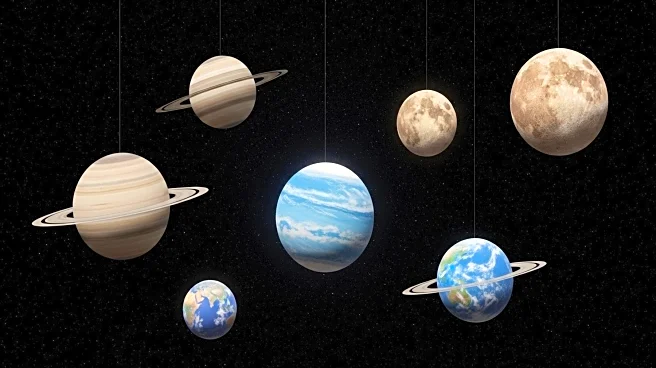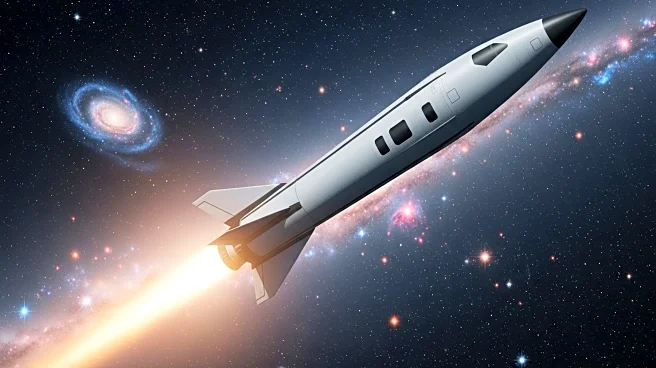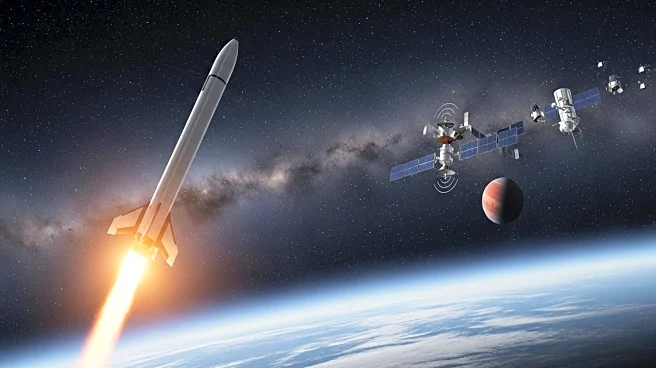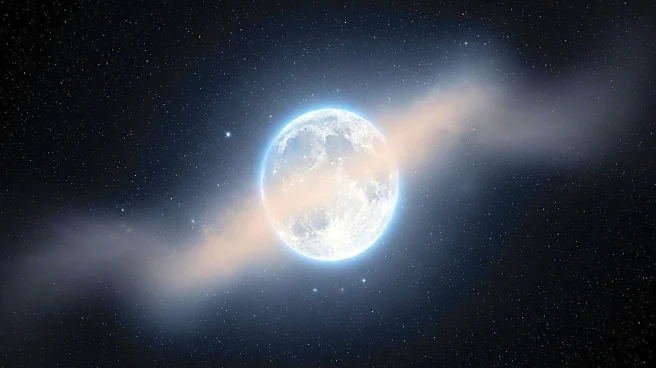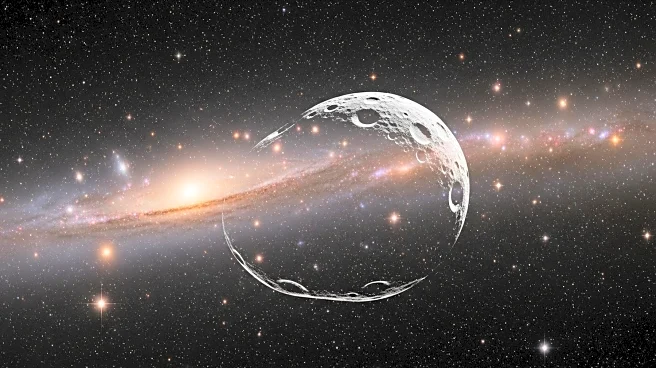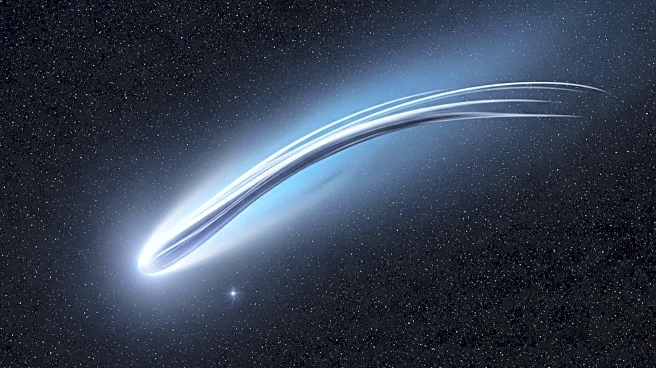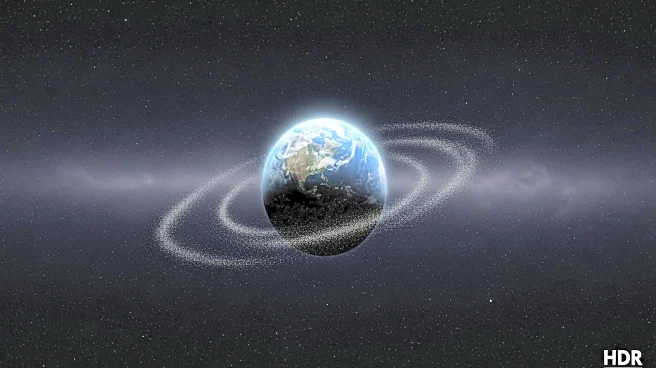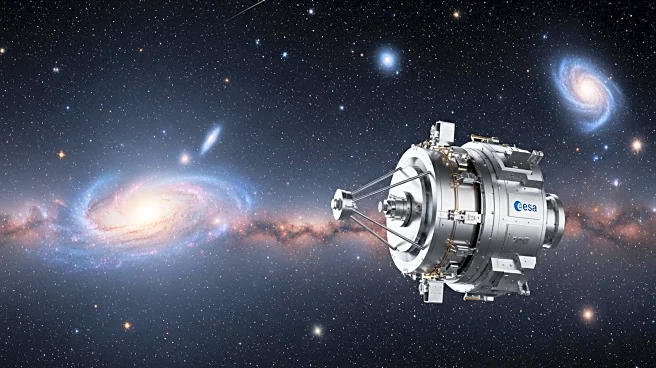What's Happening?
Astronomers have identified a new celestial object, designated as 2025 PN7, which is being classified as a quasi-moon due to its orbit that closely follows Earth's path around the sun. Discovered this summer, 2025 PN7 is notable for its small size, potentially making it the smallest known quasi-moon, with an estimated length of no more than 52 feet. The origins of this object remain speculative, as limited telescopic observations have been made. Some scientists suggest it could be a fragment from the main asteroid belt between Mars and Jupiter, or possibly a piece of the moon ejected by a meteorite impact. Carlos de la Fuente Marcos, an astronomer from the Complutense University of Madrid, has contributed to a study on this discovery, highlighting the lack of concrete evidence about its origins.
Why It's Important?
The discovery of 2025 PN7 adds to the understanding of quasi-moons, which are rare and temporary companions of Earth. These objects provide valuable insights into the dynamics of near-Earth objects and their interactions with our planet. Understanding such celestial bodies is crucial for assessing potential threats from space and for future space exploration missions. The study of 2025 PN7 could also enhance knowledge about the composition and behavior of small asteroids, contributing to broader astronomical research. This discovery underscores the importance of continued observation and study of near-Earth objects, which can have significant implications for planetary defense strategies and scientific exploration.
What's Next?
2025 PN7 is expected to remain in Earth's vicinity for a limited time, possibly around 60 years, before it moves on to another part of the solar system. During this period, astronomers will likely continue to observe and study the object to gather more data about its characteristics and origins. This ongoing research could lead to new insights into the nature of quasi-moons and their role in the solar system. Additionally, the findings may influence future missions aimed at exploring or mitigating the impact of near-Earth objects.
Beyond the Headlines
The identification of 2025 PN7 as a quasi-moon highlights the dynamic and ever-changing nature of Earth's cosmic neighborhood. It raises questions about the long-term stability of such objects and their potential to impact Earth. The study of quasi-moons like 2025 PN7 could also inform discussions about the ethical and practical considerations of space exploration and planetary defense. As technology advances, the ability to detect and analyze these small celestial bodies will improve, potentially leading to new discoveries and a deeper understanding of our place in the universe.

